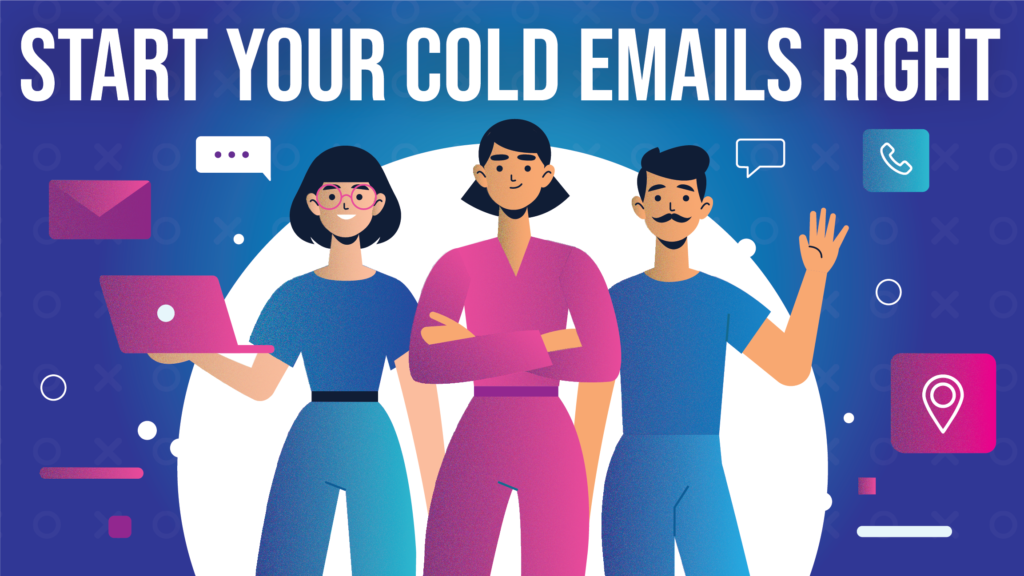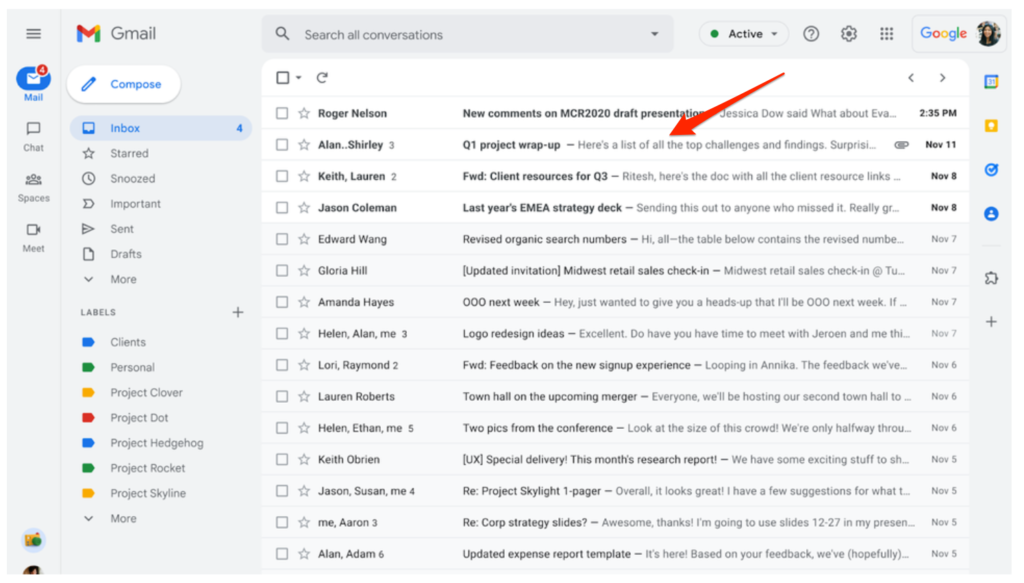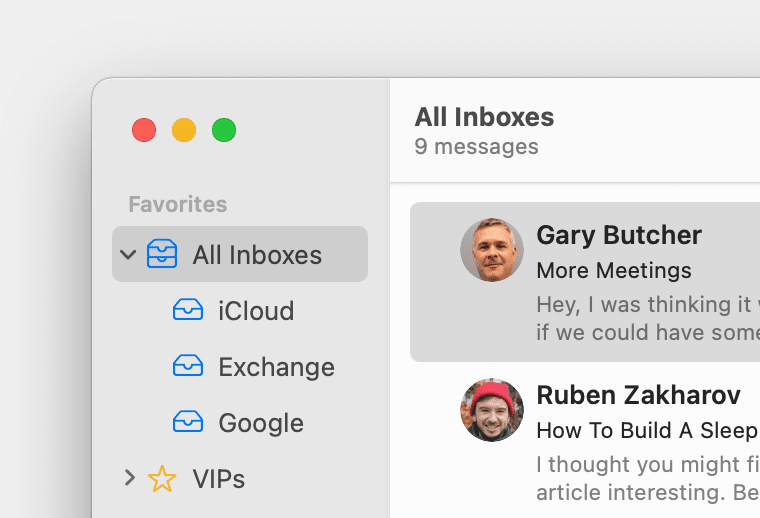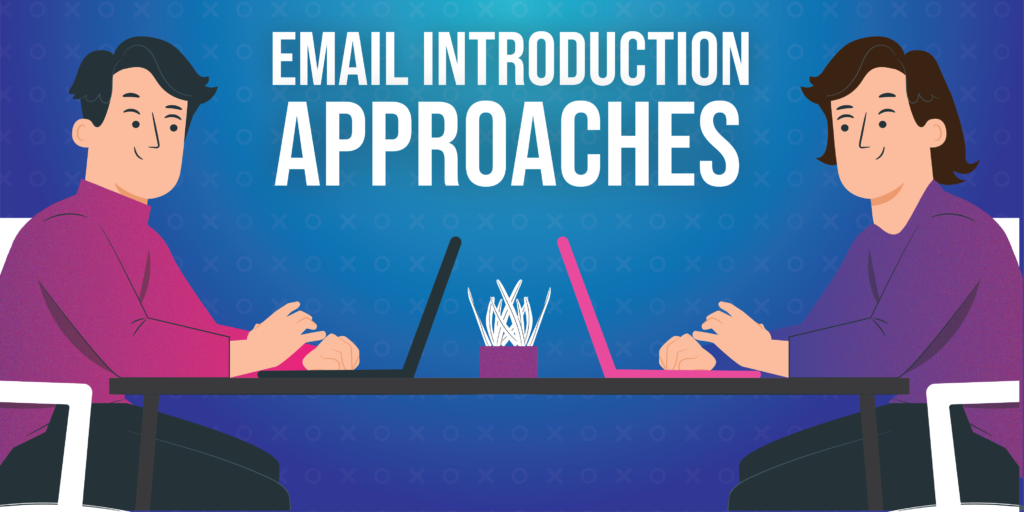How to Start a Cold Email: 13 Email Opening Sentences and Email Intros to Use

Are you constantly struggling to come up with email intros? Looking for advice that would show you how to start a cold email with a bang every time?
Well, good news – In this guide, you’ll learn exactly how to do it. Specifically, you’ll learn how to write email opening sentences that leave recipients no choice but to keep on reading. You’ll also discover the 13 best email intros and salutations that you could start using immediately.
Intrigued? Let’s get right to it, then.
Why Your Email’s Opening Sentence Is So Important?

Look, it goes without saying – Email is beyond amazing for reaching out and engaging new prospects. With email, you can reach and engage a whole bunch of people practically simultaneously.
The only thing is that even if you convince a prospect to open your message, you still need to make them read it, right?
And if you’ve ever tried cold outreach before, then you know it’s so darn tricky.
Here’s why.
You see – Practically every element of your outreach strategy aims to draw the reader deeper into your message.
- Timing – the time and day when you send the message – helps you increase the chances that recipients will notice your email in their inboxes.
- The subject line makes them want to open it and see what’s inside.
- And the email introduction encourages them to keep reading (or, most likely, scanning) the copy to uncover your message.
But there’s more…
In some cases, your email intro may also affect the open rate. This is particularly true if your prospects use email clients that display the beginning of the message in the messages list as well.
Gmail does it. Its inbox shows the subject line and the opening phrases of the message.

Many 3rd party email clients like Outlook or Apple Mail do the same. They include the beginning of the message in the messages list as well.

Because of that, as users, we’ve gotten used to seeing the opening of the email right away. We’ve learned to use all that information in front of us – the sender’s name, the email address, the email subject line, and the email opening sentence – to determine whether to even bother with opening the message.
You can be sure that your prospects act in the exact same way. They scan the inbox and evaluate all the information to rate your message before they’ve even opened it.
So, how do you write a cold email intro that ensures they will open and read it?
Let’s take a look at some of the approaches that you could take.
7 Approaches for Writing Email Introductions

Before I show you any specific examples of email intros, let’s discuss them in more generic terms.
Because you see, you can use several different approaches to construct your opening line.
A quick disclaimer – These approaches do not dictate how you write it, though. They give you quite a lot of freedom to sound like you. What these approaches do, however, is help you decide how you want to engage the prospect from the email introduction.
So, here are seven ways to write an intro to an email.
#1. The ego booster
Let’s not beat around the bush here – We all have an ego and we love it boosted from time to time.
This is exactly why offering a compliment or showing admiration for your recipient’s accomplishments is by far the most common (and, probably, the most powerful) way to start an email.
Think about it; How likely are you to open an email like this:

If it was me, I’d be hitting that delete button right away.
Now, compare it with this example:

Well, that message I’d be opening in a jiffy!
There are several ways to use this approach when writing opening sentences:
- Congratulate the recipient on a recent achievement or success (i.e., a new investment.)
- Reference their latest blog post or another piece of content and tell them why you loved it.
- Tell them about something that impressed you about their business or product.
- Ask for advice.
#2. Offering value
Another way to ensure that prospects will want to open AND read your email is to tell them why they should do it. And the only way to do that is by offering value right from the opening sentence.
When it comes to cold outreach, this value typically comes in the form of communicating a major benefit that the prospect could get from you.
For example:
- I’m reaching out because I realized that [the major benefit your company or product can deliver to the prospect]
Alternatively, you can also touch upon a particular problem they have, and offer a solution.
- I noticed that [the prospect’s current situation]. I know [how this could be changed]
- Are you experiencing [the problem]? I think I know how we could overcome this and [share a result or potential ROI of engaging with you].
The key to making this approach work is to be succinct. Remember, the prospect won’t see any long copy in the message preview. Even if they open the email, they, most likely, won’t scan a long sentence.
#3. Asking a question
There’s no doubt about it – Asking questions is one of the most powerful sales techniques ever.
Questions help you uncover the prospect’s buying needs, connect with them, and even demonstrate your expertise.
But questions can also help make your recipient stop, think, and then, want to learn more.
Naturally, for it to work, your questions must relate to a specific problem your prospect is having (and your offering helps overcome) AND they must leave space for their minds to start processing answers.
Some examples of questions to use in cold email introductions are:
- What would you do if [the problem reached an uncomfortable level]?
- Does your company want to [achieve a particular benefit]?
- Have you heard about [a competitor’s success]?
- Have you ever wondered what would happen if your [objective] increased by XX% today but never believed that it could come true?
#4. Referencing buying signals
I admit – This might be one of the hardest approaches to writing email introductions to pull off. It relies heavily on you noticing a prospect exhibiting buying signals that suggest that they might need your solution.
These buying signals will differ greatly depending on your product, the problem you solve, and your market.
There are however certain general things to look out for:
- The prospect’s organization hiring more people in your target departments.
- The prospect talking on social media about problems your offering is solving
- Trade show appearances, and so much more.
#5. Personal approach
Although in B2B selling, you’re really engaging organizations, your cold emails aim to reach an individual. And so, you can also engage them by taking a more personal approach.
One of the most effective ways to do it is by commenting or referencing their recent professional activity online. Here are just some ways to do it:
- Perhaps they shared something of interest on social media that you could reference.
- Or maybe they appeared on a podcast or gave an interview that you could mention as well.
- They might have posted or commented on a message on LinkedIn, and you could comment on that as well.
The possibilities here are endless. However, I’d strongly recommend sticking to referencing professional activities. Mentioning something about the prospect’s personal life might make you sound like a stalker and untrustworthy person.
#6. Referrals or References
Referencing people you and the prospect know already can also help get your email noticed and opened. Naturally, the most ideal scenario here is when someone recommends you to a prospect first. Referencing that in the message practically guarantees that the recipient will want to read the email.
Unfortunately, it’s not a situation in which you find yourself often.
So, another option is to mention someone you and the prospect might know or be associated with. Here are some examples of email opening lines using this approach:
- Hi John, I noticed that we both know Mark from ACME. I’ve been helping Mark’s department double their sales, and thought I’d reach out to you as well.
- Mark from ACME, a client of mine, suggested I get in touch with you regarding [the benefit Mark is getting from you or your offering.]
#7. Mentioning previous interactions with the prospect
Finally, if you’ve had recent interactions with the prospect – a recent meeting, a trade show conversation, or anything similar – you can use that to start a conversation.
Note that these email intros work even if the person doesn’t remember you. But they fail miserably if you try to fake such interactions.
Examples:
- It was great chatting with you briefly at [event]. I’d like to continue our conversation about [topic].
- I appreciate your time at [event]. I loved our chat about [topic] and would like to ask some further questions.
6 Best Salutations to Use in Cold Emails
So far, we’ve talked about different approaches to writing intros to cold emails. But there’s one thing that goes before the opening sentence, isn’t there?
It’s the salutation – a phrase of greeting that starts the whole message. In the context of an email, the salutation is the greeting you offer your recipient before the body of the email.
Now, it’s fine to skip it in an email to someone you know already. But when you’re writing a professional email, you must use s solid salutation.
The problem? Not all salutations work equally well for sales emails. So, here’s some advice on when to use different types of salutations.
When it comes to sales emails, you have several potential salutations to choose from
| Salutation | Example | Explanation |
| [first name] | Andy, | By far, this is the most direct salutation to use. Possibly the most powerful. Why? Because we respond positively to hearing our names in a conversation. |
| Hi [first name] | Hi Andy, | The most common salutation. It does sound informal, however. As a result, you might not want to use it when emailing some people. |
| Hello [first name] | Hello Andy, | A slightly less informal version of the salutation above. |
| Dear [first name] | Dear Andy, | A quite appropriate salutation for formal emails. You often see it used in cover letters, business letters, and other official business correspondence. |
| Dear [title] [surname] | Dear Mr. Cabasso | A very formal salutation but also one that shows your respect to the recipient. It does pose a risk of misgendering or wrongly assuming the recipient’s marital status. |
| Hi there/Hi everyone | – | An ideal salutation to use when emailing a group of people at the same time. |
So, which of these salutations to use? Unfortunately, there is no single answer. They all have their pros and cons, depending on the situation, your relationship with the recipient, and many other factors.
3 Mistakes to Avoid When Writing Email Introductions

We’ve talked a lot about the different ways to start an email. You learned what to say in an opening sentence, and what salutation to use.
But there are also several things you should avoid. Although, in theory, these things fall into the same category as the advice we’ve covered above, using them might actually hurt your email outreach.
Here are the three most common mistakes:
#1. Using generic salutations
Oh, I’m sure you’ve seen it already in your inbox, a cold message that starts with something like “To whom it may concern,” “Dear Sir or Madam,” or “Dear [website name] team.”
Sure, these salutations may seem professional but they’re really not. They are impersonal, dry, and overused. To any recipient, they clearly reveal that the sender hasn’t done any research or preparation before writing the email. What’s worse, they’ve, probably, sent the same message to half of the Internet or more.
#2. Using misspelled or incorrect names
This mistake is typically an oversight when building the outreach list. You either misspell the name or include the wrong name in that field in the database. The result is always the same though – An immediate no from the prospect.
#3. Leaving any template field blank
I’m sure you’ve seen such email introductions before too. The ones that start with “Dear [FIRST NAME HERE],” “Hi {first-name},” Hello {website-name},” and so on. And I think it needs no explanation of how such emails perform.
They fail. Miserably.
And there you have it…
Everything you need to know to start a cold email that captivates the reader’s attention.
All that’s left is to try those approaches in your campaigns.
Good luck!
Looking to start a cold email campaign? Check out Postaga, a dedicated sales email outreach platform.
Free 14-Day Trial
Start building relationships now with your fully-featured 14-day trial!
How We Compare
Terms | Done-For-You Terms | Privacy | Write For Us | Press
© 2024 Postaga. All Rights Reserved. Made with 
